Andrea Sala. The Phantom of the Anvil

Andrea Sala The Phantom of the Anvil circa 1918 (notice the skull and cross bones on his shirt, that was the school sports logo)
Dal 23 March 2017 al 13 May 2017
Milano
Luogo: Federica Schiavo Gallery
Indirizzo: via Michele Barozzi 6
Telefono per informazioni: +39 02 36706580
E-Mail info: info@federicaschiavo.com
Sito ufficiale: http://www.federicaschiavo.com
Building hammers to cast iron. Drawing tools’ shapes for a precise purpose, strictly related to the physical effort involved in their use; heavy tools and flat sides to hit with maximum strength, small rounded heads to hit in repetition curved metallic bits still incandescent. Andrea Sala is imagining the history of the objects that began with the same tools used to construct these objects. “Any constructed form will never be beautiful if the tool used to forge it is not as beautiful”. Sala is fascinated by forms and the domino-like nature of the production chain where it’s almost impossible to guess the beginning: to closely observe a tool, built and modelled so that it can be used to forge something else again used to assemble another object and yet another, without possibly seeing the end of the process. […] The shape of hammers and anvils – place of ancient sounds, movements, stokes and bangs – it is the artisanal mould of countless objects, the origin of thousands of geometries.
Andrea Sala (Como, 1976) – has worked between Milan and Montreal – investigates the world of manufactured goods, the world of architecture and the true nature of materials in such a manner only a true sculptor could do. At Federica Schiavo Gallery with a new series of work and in bookstores with a new artist-book "Tachipirina", RAWRAW editions, curated by Davide Giannella, the Italian artist meticulously dissects the world of objects. His hands moulding details, splinters of reality or hidden corners that, in Sala’s story summarize in a small fragment the more extended tale of a scene. […] When looked at closely, explored as it develops, the construction process of an object is a tale on its own, made of parts to be joined, both enigmatic and self-evident, obvious like the history of our materialistic culture. Intimate, mechanical and handcrafted, Sala’s work comes to life from a gigantic, limitless canvas. Surrounded by the metallic sound of hand-made hammers.
(Extract from the text by Francesco Garutti for “ICON Design” - January 2017)
SCARICA IL COMUNICATO IN PDF
COMMENTI

-
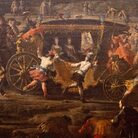 Dal 20 December 2025 al 20 April 2026
Caserta | Reggia di Caserta
Dal 20 December 2025 al 20 April 2026
Caserta | Reggia di Caserta
Regine: trame di cultura e diplomazia tra Napoli e l’Europa
-
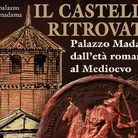 Dal 19 December 2025 al 23 March 2026
Torino | Palazzo Madama - Museo Civico d’Arte Antica
Dal 19 December 2025 al 23 March 2026
Torino | Palazzo Madama - Museo Civico d’Arte Antica
Il castello ritrovato. Palazzo Madama dall’età romana al medioevo
-
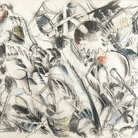 Dal 17 December 2025 al 19 January 2026
Roma | Palazzo della Cancelleria
Dal 17 December 2025 al 19 January 2026
Roma | Palazzo della Cancelleria
De Humana Mensura di Linda Karshan
-
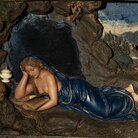 Dal 18 December 2025 al 12 April 2026
Firenze | Gallerie degli Uffizi
Dal 18 December 2025 al 12 April 2026
Firenze | Gallerie degli Uffizi
Cera una volta. Sculture dalle collezioni medicee
-
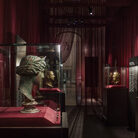 Dal 11 December 2025 al 9 April 2026
Firenze | Museo Archeologico Nazionale di Firenze
Dal 11 December 2025 al 9 April 2026
Firenze | Museo Archeologico Nazionale di Firenze
Icone di Potere e Bellezza
-
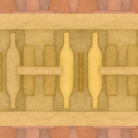 Dal 11 December 2025 al 11 January 2026
Roma | Palazzo Esposizioni Roma
Dal 11 December 2025 al 11 January 2026
Roma | Palazzo Esposizioni Roma
Giorgio Morandi nella Collezione Eni. Un viaggio attraverso la storia culturale del cane a sei zampe e l’eredità di Enrico Mattei


